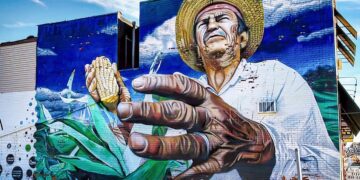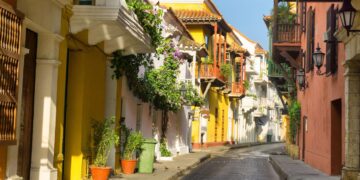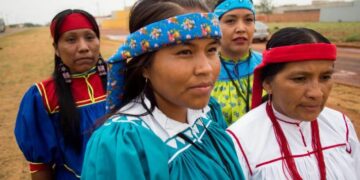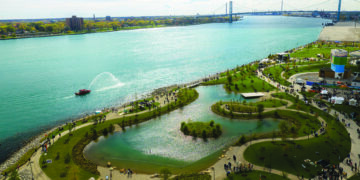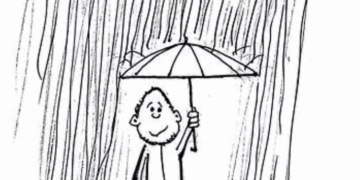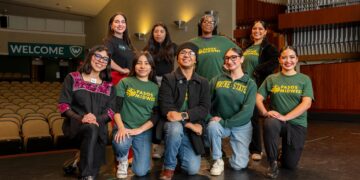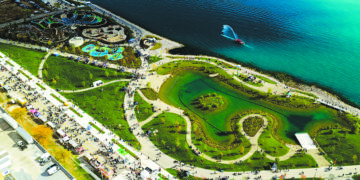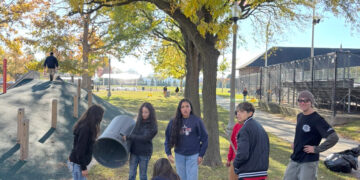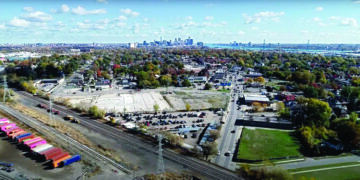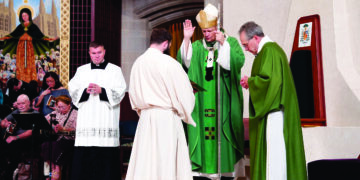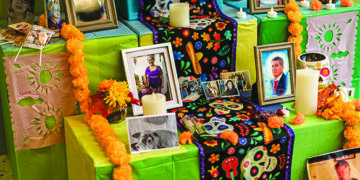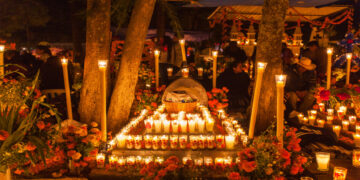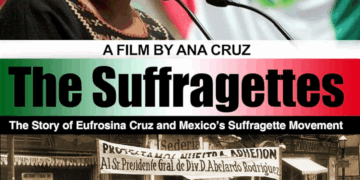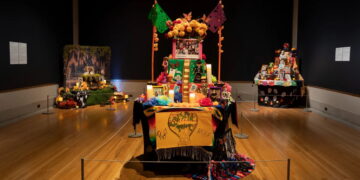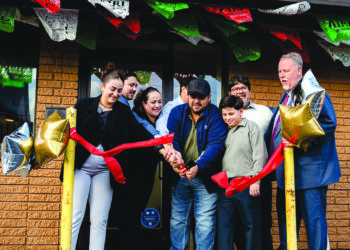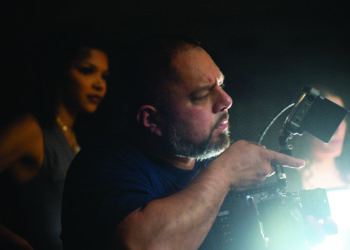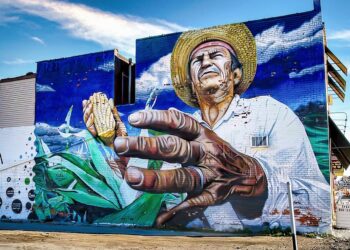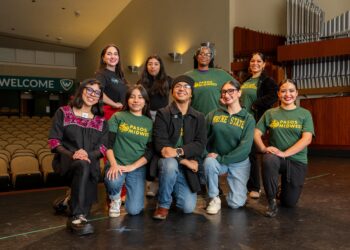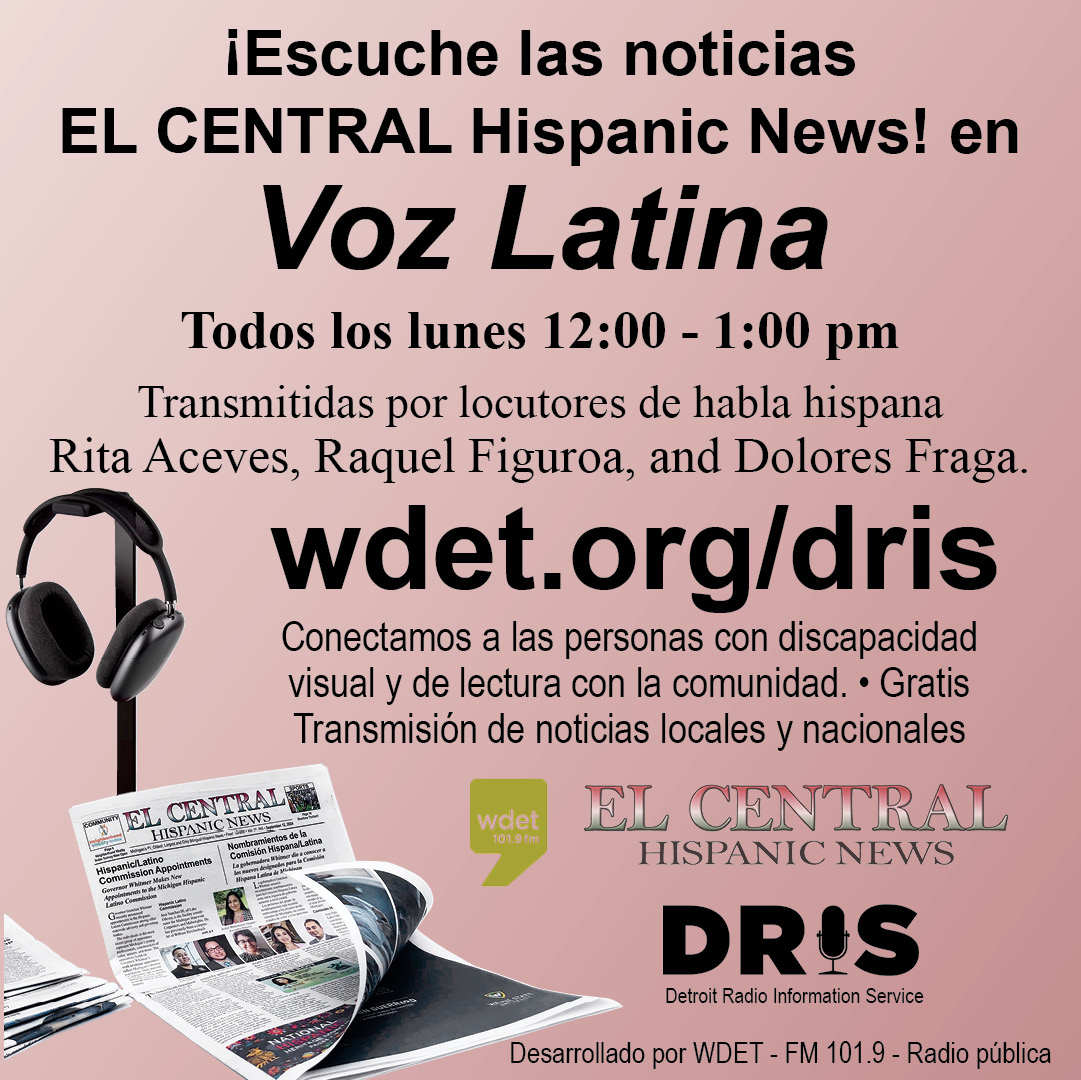The Great Lakes Way is an interconnected set of greenways and water trails stretching from southern Lake Huron through western Lake Erie. Its vision is to ensure that all residents and visitors of southeast Michigan – people of all ages, backgrounds, ethnicities, abilities, and interests – are connected to these water resources, feel welcome on its trails, and share in the benefits and opportunities offered by access to water. And it will be coming right through Southwest Detroit and will bring more visitors to Mexicantown.

The Community Foundation for Southeast Michigan and many partners are knitting together 160 miles of greenways and 156 miles of water trails to become The Great Lakes Way.
All the water trails or blueways are complete and available for use. Preliminary mapping of greenways found that 64% are completed or partially complete, 25% are planned, and 11% remain to be completed. Through this initiative, the Community Foundation will be amplifying the important work of local trail organizations like the Joe Louis Greenway so that they don’t lose their identity and will be ensuring that they benefit from being part of a larger trail system. The Great Lakes Way will build on existing assets and programs, ensure broad equity, and put The Great Lakes Way into the consciousness of residents and visitors to the region.
World-class Water, Wildlife, and Recreation Right in Our Backyard
Metropolitan Detroit is situated in the heart of the Great Lakes which represent one-fifth of the standing freshwater on the Earth’s surface. The Great Lakes Way is unique for its continentally significant natural resources and for its history, including Mexican and Native American, Underground Railroad, shipbuilding, automobile manufacturing, Arsenal of Democracy, and more. Along The Great Lakes Way, you will find one of the largest freshwater deltas in the world – the St. Clair Flats, a Wetland of International Importance designated under the Ramsar Convention on Wetlands, four Important Bird Areas designated by National Audubon, the only international heritage river system in the world – the Detroit River, the only international wildlife refuge in North America, a Regional Shorebird Reserve designated under the Western Hemispheric Shorebird Reserve Network, one of the three best places of watch hawk migrations in the United States, one of the top ten metropolitan areas for waterfowl hunting in the United States identified by Ducks Unlimited, and an internationally renowned sport fishery that attracts tournaments offering $500,000-$1.5 million in prize money.
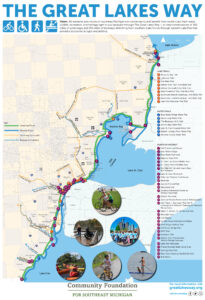
The Great Lakes Way traverses along or through 30 different federal lands, 15 state parks or state game/wildlife areas, two metro parks, and 90 county and city parks. Together, these natural resources and recreational, historical, and cultural amenities provide a compelling outdoor experience for nearly seven million people living in the watershed and millions more annual visitors, an urban experience that is truly unique.
The Joe Louis Greenway Coming Through Southwest Detroit
The Joe Louis Greenway will be the local trail coming through Southwest Detroit. It is a 27.5-mile trail loop that will connect neighborhoods, people, and outdoor spaces. Recently, the City of Detroit, the Detroit Riverfront Conservancy, and the Joe Louis Greenway Partnership came together to form a Unified Greenway Partnership. This Partnership will be the funding mechanism to complete both the Joe Louis Greenway and the Detroit RiverWalk. On May 24th, the Southwest Greenway bicycle/pedestrian path opened that connects Mexicantown with Corktown and the Detroit RiverWalk’s 22-acre Ralph C. Wilson, Jr. Centennial Park that is now under construction. This park will be another jewel in the necklace of unique outdoor places and open spaces that are connected by the Detroit RiverWalk – the No. 1 riverwalk in the United States for three years running.
In total, $350 million will be needed to complete the Joe Louis Greenway and the Detroit RiverWalk, including $200 million to complete the Joe Louis Greenway, $50 million to complete the Detroit RiverWalk, and $100 million to establish an endowment fund at the Community Foundation for Southeast Michigan to operate, maintain, and program these greenways. In June, it was announced that $239 million in federal, state, local, and philanthropic funds had already been raised. This is huge news for Southwest Detroit and Mexicantown.
Connections to Canada
Windsor, Ontario and Detroit are Great Lakes border cities on the Detroit River. Windsor has a long history of greenways dating back to the 1960s. In many respects, Windsor’s waterfront greenways were an inspiration to Detroit’s greenways that gained traction in the 1990s.
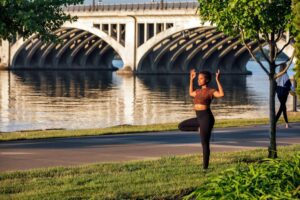
With the announcement of a new border crossing between Windsor and Detroit – the Gordie Howe International Bridge – greenway stakeholders came together to envision cross-border linkages and released a U.S.-Canada Greenways Vision Map in 2016 to connect emerging greenways. In response to this 2016 vision map, the Windsor-Detroit Bridge Authority committed to including a dedicated bicycle and pedestrian lane on the new Gordie Howe International Bridge, projected to be completed in 2024 or 2025.
Detroit’s greenways are part of Michigan’s Iron Belle Trail that extends more than 2,000 miles from Ironwood, Michigan, located at the far western tip of Michigan’s Upper Peninsula, to Belle Isle State Park in Detroit and The Great Lakes Way. Windsor’s greenways connect to Essex County greenways and are part of the Great Lakes Waterfront Trail that stretches along the shores of Lake Ontario, Lake Erie, Lake St. Clair, Lake Huron, Lake Superior, and St. Lawrence, Niagara, Detroit, St. Clair, and St. Marys Rivers – a total of 1,865 miles. The Great Lakes Waterfront Trail is also connected to the Trans Canada Trail that stretches from the Atlantic to the Pacific to the Arctic Oceans – nearly 15,000 miles. It is the longest recreational, multi-use, trail network in the world.
When the new Gordie Howe International Bridge opens in 2024 or 2025, these four trail systems will be connected, providing a binational outdoor recreational experience unparalleled in North America. Cross-border trail experiences will include Windsor-Detroit Open Streets events (where certain streets are closed to automobile traffic and only open for pedestrians and cyclists for special celebrations); Underground Railroad tours; cultural and First Nations celebrations; environmental celebrations like World Migratory Bird Day and Earth Day; automobile history; rum-running history; and so much more.
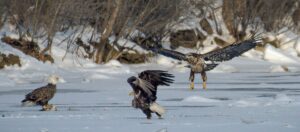
Benefits of The Great Lakes Way
The Great Lakes Way is already helping improve quality of life, connect people to one another and the outdoors, celebrate our shared history and culture, improve health, and reap economic benefits. Such benefits are only increasing as people are spending more time outdoors walking, exercising, and recreating. A recent economic impact study found that the economic benefits of The Great Lakes Way are about $4 billion.
Next Steps
The Detroit RiverWalk, the Joe Louis Greenway, and The Great Lakes Way are clearly helping change the perception of Detroit from that of a Rust Belt city to one that is actively engaged in sustainable redevelopment. The next steps for The Great Lakes Way include: engaging communities and putting The Great Lakes Way into the consciousness of residents and visitors, building support and seeking additional partners, strengthening transboundary collaboration on trails; and exploring national and/or state trail designations to raise its profile and help ensure long-term sustainability. For more information about The Great Lakes Way, visit: www.greatlakesway.org. For more information on economic benefits of The Great Lakes Way, visit: https://cfsem.org/initiative/greatlakesway/reports/.
El Suroeste de Detroit y el Mexicantown – Destinos únicos en La Ruta de los Grandes Lagos
La Ruta de los Grandes Lagos, es un conjunto interconectado de vías verdes y senderos de agua que se extiende desde el sur del lago Huron hasta el oeste del lago Erie. Su visión es garantizar que todos los residentes y visitantes del sureste de Michigan (personas de todas las edades, orígenes, etnias, habilidades e intereses) que estén conectados a estos recursos hídricos, se sientan bienvenidos y compartan los beneficios y oportunidades que ofrece. Esta ruta pasará por el suroeste de Detroit y atraerá más visitantes al Mexicantown.

La Fundación Comunitaria para el Sudeste de Michigan y otros socios, están conectando 160 millas de vías verdes y 156 millas de senderos de agua para convertirlas en La Ruta de los Grandes Lagos.
Todos los senderos de agua o vías azules están completos y disponibles para su uso. El mapeo preliminar de vías verdes encontró que el 64% está completo o parcialmente terminado, el 25% está planificado y el 11% aún no se ha completado.A través de esta iniciativa, la Fundación Comunitaria ampliará el importante trabajo de las organizaciones locales de senderos como Joe Louis Greenway para que no pierdan su identidad y se asegurará de que se beneficien de ser parte de un sistema de senderos más grande. La Ruta de los Grandes Lagos se basará en los programas existentes, garantizará una amplia equidad y pondrá a la Ruta de los Grandes Lagos en la conciencia de los residentes y visitantes de la región.
Agua, vida silvestre y recreación de clase mundial en nuestro patio trasero
El área metropolitana de Detroit está situada en el corazón de los Grandes Lagos, que representan una quinta parte del agua dulce en la superficie de la Tierra. La Ruta de los Grandes Lagos es única, por sus recursos naturales de importancia continental y por su historia, incluidos los mexicanos y los nativos americanos, el ferrocarril subterráneo, la construcción naval, la fabricación de automóviles, el Arsenal de la Democracia y más. A lo largo de la Ruta de los Grandes Lagos, encontrará uno de los recursos de agua dulce más grandes del mundo: St. Clair Flats, un humedal de importancia internacional designado en virtud de la Convención de Ramsar sobre los humedales, cuatro Áreas importantes para las aves atribuidas por National Audubon, el único sistema fluvial patrimonial en el mundo: el río Detroit, que es el único refugio internacional de vida silvestre en América del Norte, una Reserva Regional de Aves Playeras designada bajo la Red Hemisférica de Reservas de Aves Playeras, uno de los tres mejores lugar es para observar las migraciones de halcones en los Estados Unidos, una de las diez principales áreas metropolitanas para la caza de aves acuáticas en los Estados Unidos identificadas por Ducks Unlimited, y pesca deportiva de renombre internacional que atrae torneos que ofrecen $500,000- $1,5 millones en premios.

La Ruta de los Grandes Lagos atraviesa 30 tierras federales diferentes, 15 parques estatales o áreas de juego/vida silvestre estatales, dos parques metropolitanos (metro Parks) y 90 parques de los condados y ciudades. Estos recursos naturales sus comodidades recreativas, históricas y culturales brindan una experiencia al aire libre para casi siete millones de personas que viven en la cuenca y millones de visitantes anuales, logrando una experiencia urbana verdaderamente única.
El Joe Louis Greenway atraviesa el suroeste de Detroit
El Joe Louis Greenway será el sendero local que atravesará el suroeste de Detroit. Es un circuito de senderos de 27.5 millas que conectará vecindarios, personas y espacios al aire libre. Recientemente, la ciudad de Detroit, Detroit Riverfront Conservancy y Joe Louis Greenway Partnership se unieron para formar la Unified Greenway Partnership. Esta asociación será el mecanismo de financiación para completar Joe Louis Greenway y Detroit RiverWalk. El 24 de mayo, se inauguró el sendero para bicicletas Southwest Greenway que conecta Mexicantown con Corktown y el Ralph C. Wilson, Jr. Centennial Park de 22 acres de Detroit RiverWalk que ahora está en construcción. Este parque será otra joya en el collar de lugares al aire libre y espacios abiertos que están conectados por el Detroit RiverWalk, el paseo fluvial número 1 en los Estados Unidos durante tres años consecutivos.
En total, se necesitarán $350 millones para completar Joe Louis Greenway y Detroit RiverWalk, incluidos $200 millones para completar Joe Louis Greenway, $50 millones para completar Detroit RiverWalk y $100 millones para establecer un fondo de dotación en la Fundación Comunitaria para el Sureste de Michigan para operar, conservar y programar estas vías verdes. En junio, se anunció que ya se habían recaudado $239 millones en fondos federales, estatales, locales y filantrópicos. Esta es una gran noticia para el suroeste de Detroit y Mexicantown.
Conexiones con Canadá
Windsor, Ontario y Detroit son ciudades fronterizas de los Grandes Lagos en el río Detroit. Windsor tiene una larga historia de vías verdes que se remonta a la década de 1960. En muchos aspectos, las vías verdes frente a los lagos en Windsor fueron una inspiración para las vías verdes de Detroit, que ganaron terreno en la década de 1990.

Con el anuncio de un nuevo cruce fronterizo entre Windsor y Detroit – el Puente Internacional Gordie Howe: las partes interesadas en las vías verdes se unieron para imaginar enlaces transfronterizos y publicaron un Mapa de Visión de Vías Verdes de EE. UU. y Canadá en 2016 para conectar las vías verdes emergentes. En respuesta a este mapa de visión de 2016, la Autoridad del Puente de Windsor-Detroit se comprometió a incluir un carril exclusivo para bicicletas y peatones en el nuevo Puente Internacional Gordie Howe, cuya finalización se proyecta para 2024 o 2025.
Las vías verdes de Detroit son parte del sendero Iron Belle de Michigan que se extiende más de 2,000 millas desde Ironwood, Michigan, ubicado en el extremo occidental de la Península Superior, hasta el Parque Estatal Belle Isle en Detroit y la Ruta de los Grandes Lagos. Las vías verdes de Windsor se conectan con las vías verdes del condado de Essex y son parte del Sendero de la Ribera de los Grandes Lagos (Great Lakes Waterfront Trail) que se extiende por la orilla del lago Ontario, el lago Erie, el lago St. Clair, el lago Huron, el lago Superior y St. Lawrence, Niagara, Detroit, St. Clair y los ríos de St. Marys: un total de 1,865 millas. El sendero de la Ribera de los Grandes Lagos también está conectado con el Sendero Trans Canada que se extiende desde el Atlántico hasta el Pacífico y los océanos Árticos, casi 15,000 millas. Es la red de senderos recreativos y de usos múltiples más larga del mundo.
Cuando se inaugure el nuevo Puente Internacional Gordie Howe en 2024 o 2025, estos cuatro sistemas de senderos estarán conectados, proporcionando una experiencia recreativa al aire libre binacional sin precedentes en América del Norte. Las experiencias de senderos transfronterizos incluirán eventos de Calles Abiertas de Windsor a Detroit (donde ciertas calles estarán cerradas al tráfico de automóviles y abiertas solo para peatones y ciclistas en celebraciones especiales); Recorridos del Ferrocarril Subterráneo; celebraciones culturales y de las Primeras Naciones; celebraciones ambientales como el Día Mundial de las Aves Migratorias y el Día de la Tierra; historia del automóvil; historia de los traficantes de ron; y mucho más.

Beneficios de La Ruta de los Grandes Lagos
Esta iniciativa está ayudando a mejorar la calidad de vida, conectando a las personas entre sí, al aire libre; celebrando la historia y cultura que compartimos; mejorando la salud y obteniendo beneficios económicos. Estos beneficios se dan a medida que las personas andan más tiempo al aire libre, ejercitándose y recreándose. Un estudio de impacto económico reciente encontró que los beneficios económicos de la Ruta de los Grandes Lagos son de aproximadamente $4 mil millones.
Los Próximos pasos
Detroit RiverWalk, Joe Louis Greenway y La Ruta de los Grande Lagos, claramente están ayudando a cambiar la percepción de Detroit de una ciudad de Rust Belt a una que participa activamente en la reurbanización sostenible. Los próximos pasos de la Ruta de los Grandes Lagos incluyen: involucrar a las comunidades y poner la Ruta de los Grandes Lagos en la mente de los residentes y visitantes, generar apoyo y buscar socios adicionales, fortalecer la colaboración transfronteriza en los senderos; y explorar las designaciones de senderos nacionales y/o estatales para elevar el perfil y garantizar la sostenibilidad a largo plazo. Para obtener más información sobre La Ruta de los Grandes Lagos, visite: www.greatlakesway.org. Para obtener más información sobre los beneficios económicos de la Ruta de los Grandes Lagos visite: https://cfsem.org/initiative/greatlakesway/reports/.


